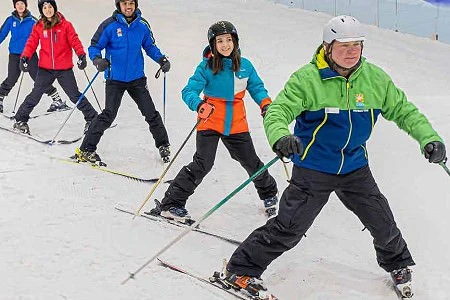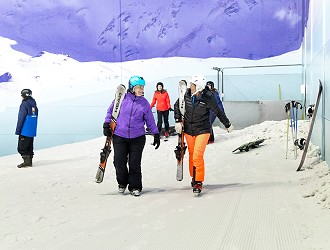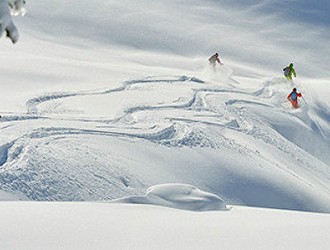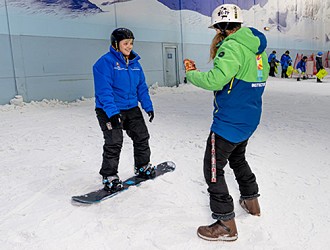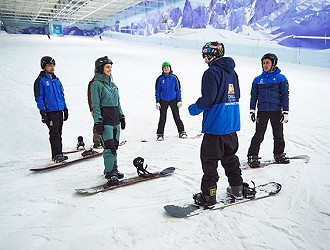Slalom Skiing Tips & Tricks
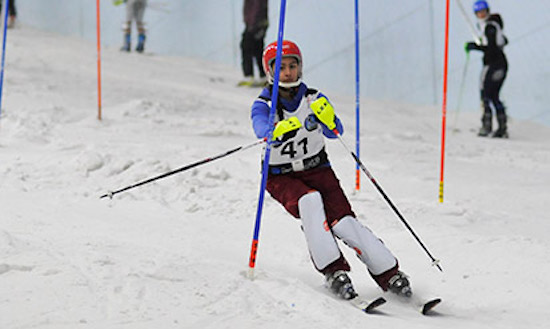
Slalom Skiing Tips
Slalom skiing is one of the most powerful and challenging events in the sport. It involves speed, strong carving turns, rhythm and great confidence – it’s one of the most exhilarating things you can do on skis but is a very advanced technique.
If you aren’t quite ready for this level of skiing yet, take a look at our advanced skiing tips and skiing tips for experts to improve your skills, and above all keep practising – it’s the only guaranteed way of becoming a better skier to master a ski slalom.
Slalom skiing is pretty intense and it’s best started under instruction. Luckily for you, our expert ski instructors at Chill Factore love a challenge and have a real passion for helping people develop their skiing and achieve their goals during ski lessons.
Slalom ski - Big Round Turns
You might think that sharp fast turns would be needed in slalom skiing given that you need to fit the turn in between the gates but really it’s quite the opposite. The reason those World Cup skiers look so smooth and flowing as they go through the ski slalom gates is because their turns are round. Tightening your turns simply ends up with skidding and chatter leading to loss of the line and loss of time.
Slalom ski - Quiet body
When you ski through the gates in a slalom your body travels through rather than around the gate. This is where you hear the thwack thwack of plastic on plastic as the skier ‘clears’ or ‘blocks’ the gate as they pass. How you do this is important, your arm movements that clear the gate must be independent from your body so that your body stays true to the line and you stay focused on where you are going. Any flailing around of the arms is only going to slow you down and move you off your ski line.
Slalom ski - Pick your line
Where you focus your vision is highly important in a ski slalom. You need to make sure your skis go through the gate rather than around it, get close enough to keep a fast line through the gates and yet make sure that no hooking – where one ski goes the wrong side of the gate – occurs. Focusing your vision on the outside of the gate rather than the inside can really help with this. To ski a tight line your body travels through the gate rather than around it and focusing your vision on the outside of the gate will bring your skis closer to the inside of the gate giving you a tighter line, making for more accurate slalom skiing.
Slalom ski - String carving
To ski slalom you must have strong carving skills. Skidding and chattering around on the slope between gates will take you off your line, slow you down and mean that you will very likely end up hooking or missing gates. The key to good carving in slalom skiing is to start the carving as early in the turn as possible and doing this is all about body position. To get the skis to carve into the snow as soon as possible the skier needs to absorb the pressure at the end of the turn by flexing their hips and knees and extending them again to force the skis into the snow at the start of a new turn.
Slalom ski - Keep working at it
Practice makes perfect, as they say. And it’s true, no amount of reading is really going to improve your skiing that much. The only thing that will improve your slalom skiing is to get out onto the snow and keep going at it until you get it. Luckily Chill Factore is open 7 days a week for you to do just that, find out when you can ski and plan your next visit today. Book a private ski lesson to improve your skills with one of our dedicated instructors.

